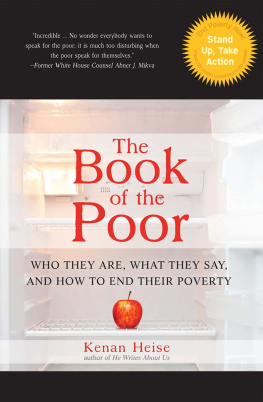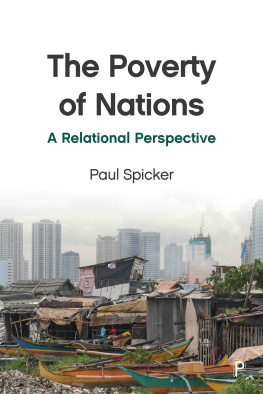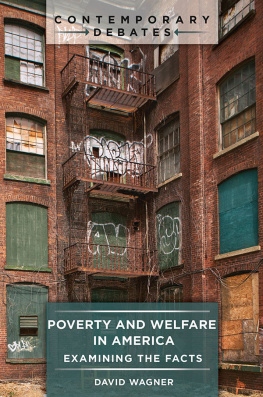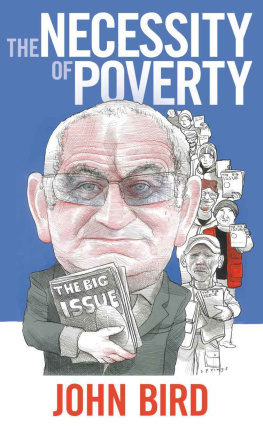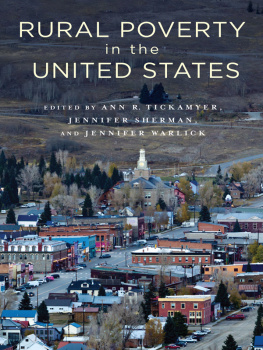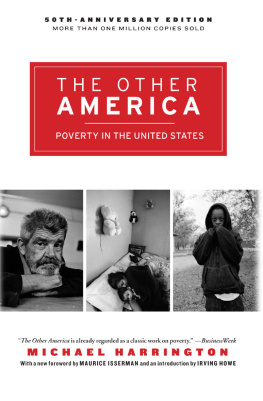A TIME MAGAZINE ALL-TIME 100 BEST NONFICTION BOOK
An excellent bookand a most important one.
THE NEW YORKER
WHEN MICHAEL HARRINGTONS MASTERPIECE, THE OTHER AMERICA , was first published in 1962, it was hailed as an explosive work and became a galvanizing force for the War on Poverty. Harrington shed light on the lives of the poorfrom farm to cityand the social forces that relegated them to poverty. He was determined to make poverty in the United States visible, and his observations and analyses have had a profound effect on our countryfrom how we view the poor to the policies implemented to fight poverty. In the fifty years since it was published, The Other America has been established as a seminal work of sociology. This anniversary edition includes Michael Harringtons essays on poverty in the 1970s and 1980s as well as a new foreword by Harringtons biographer, Maurice Isserman. This illuminating, profoundly moving classic is still all too relevant for todays America.
Mike Harrington has made more Americans more uncomfortable for more good reasons than any other person I know. For most people, that would be achievement enough. But for Mike it was only the beginningbecause the more he saw that was wrong with America, the harder he fought to make it right.
SENATOR EDWARD KENNEDY
[ The Other America is a] scream of rage, a call to conscience.
THE NEW YORK TIMES BOOK REVIEW
MICHAEL HARRINGTON was the dean of American Socialism. He was the author of numerous books, including Toward a Democratic Left; The New American Poverty; Socialism: Past and Future; and his autobiography, The Long-Distance Runner . He was a contributing editor of Dissent and the chief editor of the Socialist party biweekly, New America . He died in 1989.

MEET THE AUTHORS, WATCH VIDEOS AND MORE AT
SimonandSchuster.com
THE SOURCE FOR READING GROUPS
COVER DESIGN BY LAURIE CARKEET
COVER PHOTOGRAPHS, LEFT TO RIGHT: JP LAFFONT/SYGMA/CORBIS;
JANET JARMAN/CORBIS; SCOTT HOUSTON/CORBIS
Praise for The Other America
Mike Harrington has made more Americans more uncomfortable for more good reasons than any other person I know. For most people, that would be achievement enough. But for Mike it was only the beginningbecause the more he saw that was wrong with America, the harder he fought to make it right.
Senator Edward Kennedy
[ The Other America is a] scream of rage, a call to conscience.
The New York Times Book Review
In the admirably short space of under two hundred pages [Harrington] outlines the problem, describes in imaginative detail what it means to be poor in this country today and analyzes the reasons for the persistence of mass poverty in the midst of general prosperity. It is an excellent bookand a most important one.
Dwight Macdonald, The New Yorker

Also by Michael Harrington
The Accidental Century
Toward a Democratic Left:
A Radical Program for a New Majority
Socialism
Fragments of the Century: A Social Autobiography
Decade of Decision: The Crisis of the American System
The New American Poverty
The Next Left: The History of a Future
The Long-Distance Runner: An Autobiography
Socialism: Past & Future


SCRIBNER
A Division of Simon & Schuster, Inc.
1230 Avenue of the Americas
New York, NY 10020
www.SimonandSchuster.com
Copyright 1962, 1969, 1981 by Michael Harrington
Introduction copyright 1993 by Simon & Schuster, Inc.
Foreword copyright 2012 by Maurice Isserman
All rights reserved, including the right to reproduce this book or portions thereof in any form whatsoever. For information address Scribner Subsidiary Rights Department, 1230 Avenue of the Americas, New York, NY 10020.
This Scribner trade paperback edition March 2012
SCRIBNER and design are registered trademarks of The Gale Group, Inc., used under license by Simon & Schuster, Inc., the publisher of this work.
The Simon & Schuster Speakers Bureau can bring authors to your live event. For more information or to book an event contact the Simon & Schuster Speakers Bureau at 1-866-248-3049 or visit our website at www.simonspeakers.com.
DESIGNED BY ERICH HOBBING
Library of Congress Control Number: 93010798
ISBN 978-0-684-82678-3
ISBN 978-1-4516-8876-4 (eBook)
Contents
Foreword to The Other America
by Maurice Isserman
Foreword
to The Other America
by Maurice Isserman
When Michael Harringtons The Other America: Poverty in the United States first appeared in bookstores in March 1962, its author had modest hopes for its success, expecting to sell at most a few thousand copies. Instead, the book proved a publishing phenomenon, garnering substantial sales (70,000 in several editions within its first year, and more than a million in paperback since then), wide and respectful critical attention, and a significant influence over the direction of social welfare policy in the United States during the decade that followed. By February 1964, Business Week noted that The Other America is already regarded as a classic work on poverty. Time magazine later offered even more sweeping praise, listing The Other America in a 1998 article titled Required Reading as one of the twentieth centurys ten most influential books, putting it in such distinguished company as Sigmund Freuds Civilization and Its Discontents and Aleksandr Solzhenitsyns The Gulag Archipelago .
Harringtons own knowledge of poverty was, for the most part, acquired secondhand, as he would recount in two memoirs, Fragments of the Century (1973) and The Long-Distance Runner: An Autobiography (1988). Born in 1928 in St. Louis, the only child of loving and moderately prosperous parents of sturdy Irish Catholic lineage, educated at Holy Cross, Yale Law School, and the University of Chicago, he moved to New York City in 1949 to become a writer. In 1951 he joined Dorothy Days Catholic Worker movement as a volunteer at its soup kitchen; there he got to know a small subset of the nations poor: the homeless male alcoholics of New York Citys Bowery district. Within a few years he left the Catholic Worker (and the Catholic Church) and joined the Young Peoples Socialist League, the youth affiliate of the battered remnants of the American Socialist Party, a party then led by Norman Thomas. A tireless organizer, prolific writer, skillful debater, and charismatic orator, Harrington succeeded Thomas as Americas best-known socialist in the 1960s, just as Thomas had succeeded Eugene Debs in that role in the 1920s. Socialism was never the road to power in the United States, but socialist leaders such as Debs, Thomas, and Harrington were, from time to time, able to play the role of Americas social conscience. In the years since Harringtons death from cancer in 1989, at the age of sixty-one, no obvious successor to the post of socialist tribune in the Debs-Thomas-Harrington tradition has emerged.
Harringtons most famous appeal to the American conscience, The Other America, was a short work (186 pages in the original edition) with a simple thesis: poverty in the affluent society of the United States was both more extensive and more tenacious than most Americans assumed. The extent of poverty could be calculated by counting the number of American households that survived on an annual income of less than $3,000. These figures were readily available in the census data, but until Harrington published The Other America they were rarely considered. Harrington revealed to his readers that an invisible land of the poor, more than 40,000,000 strong, or one in four Americans at the time, fell below the poverty line. For the most part this Other America existed in rural isolation and in crowded slums where middle-class visitors seldom ventured. That the poor are invisible is one of the most important things about them, Harrington wrote in his introduction in 1962. They are not simply neglected and forgotten as in the old rhetoric of reform; what is much worse, they are not seen.
Next page



